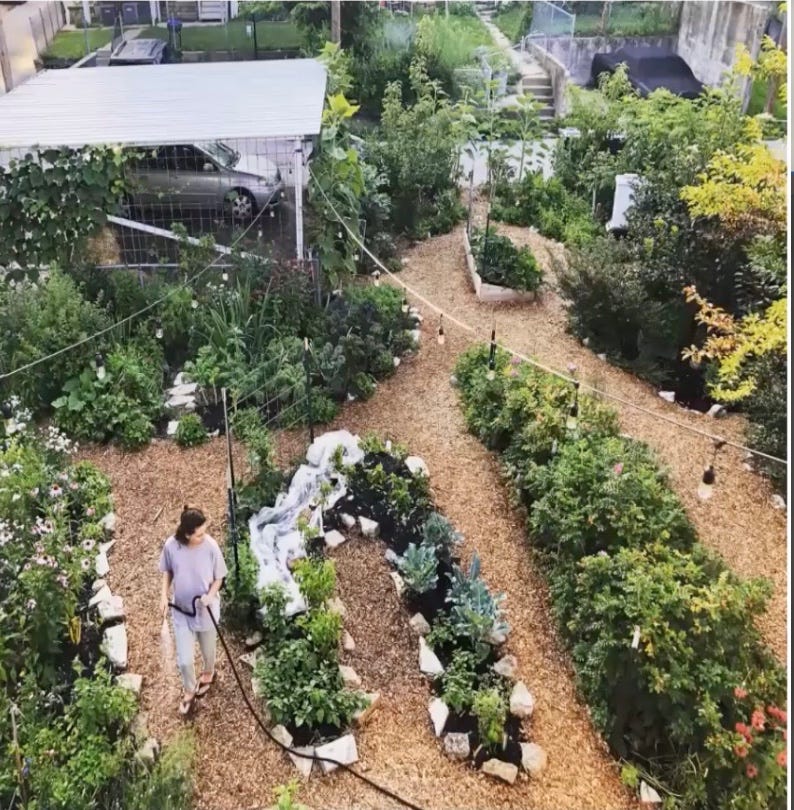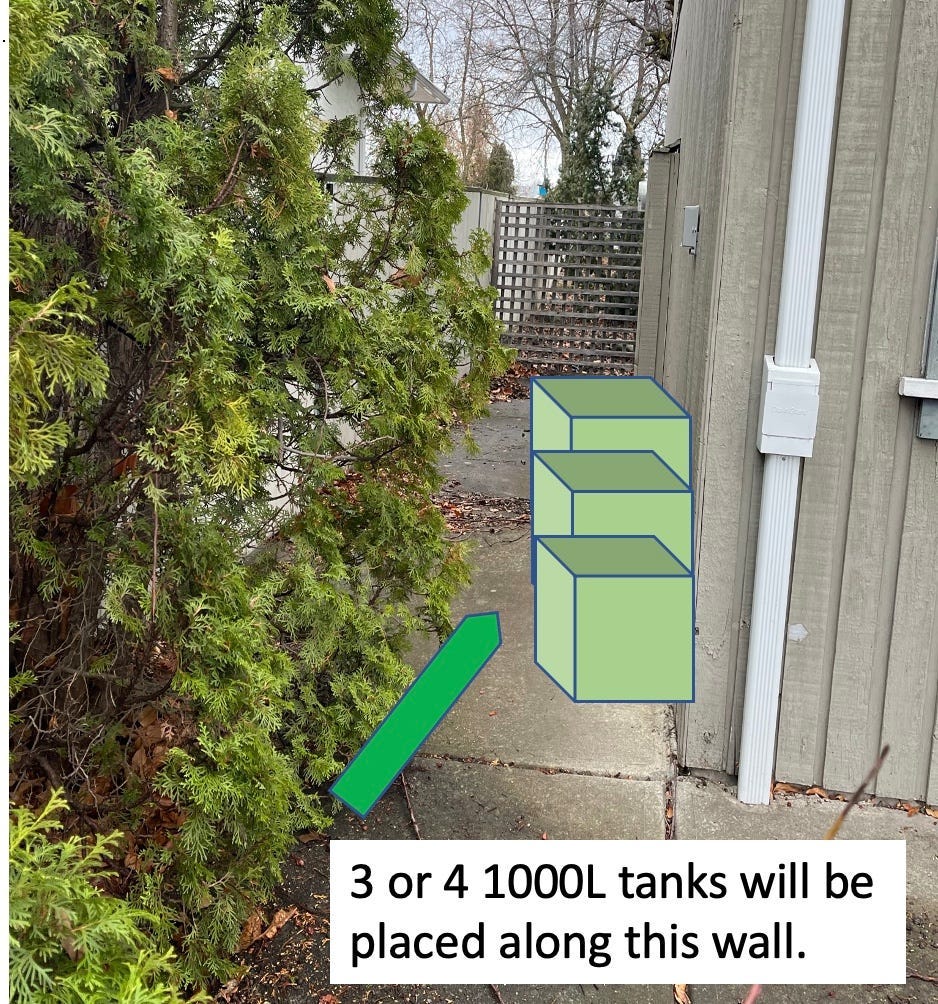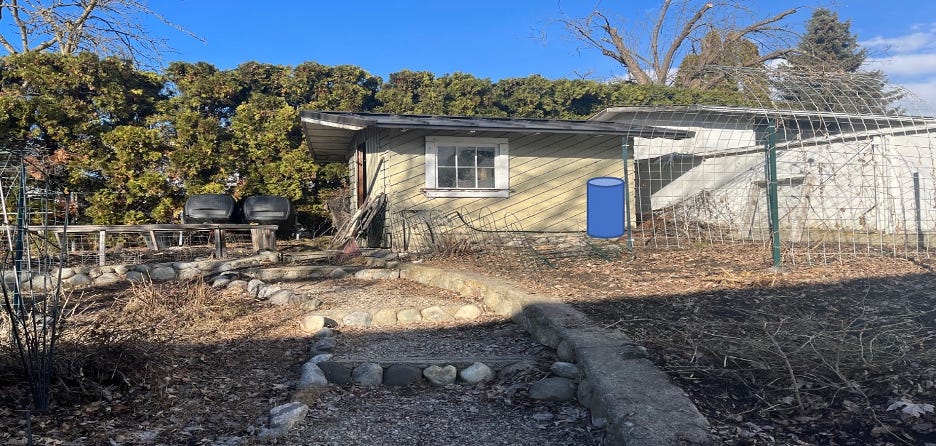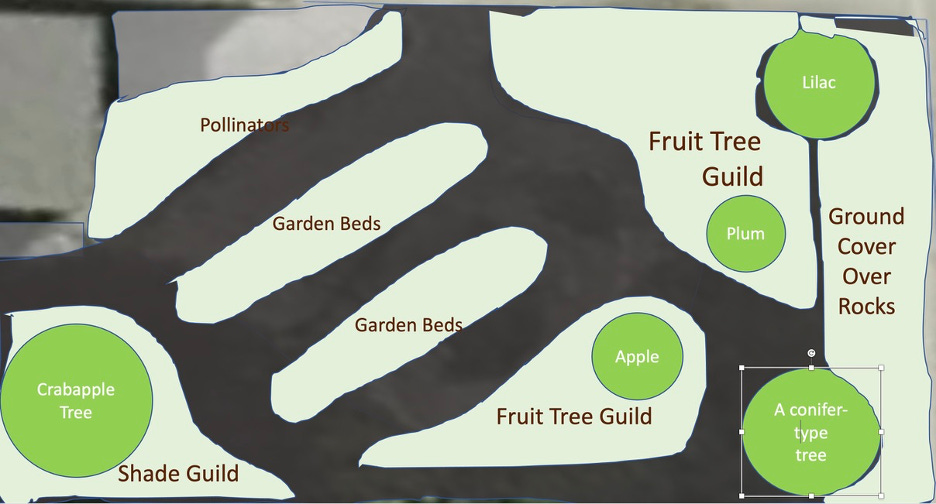Essential Elements of Creating an Abundant Food Forest
As I walk by people's grass-filled front yards, unbeknownst to them, my brain begins sculpting it into a bountiful area of scrumptious, alive, and purposeful possibilities!
I am in the process of implementing the Permaculture Design (PDC) knowledge and skills I have gained as I transform my front yard into a vibrant food forest health-scape alive with numerous types of berries, one or two fruit trees, a hazelnut shrub, vegetables, medicinal plants, various pollinator, insectary, and nectary plants.
What is a Food Forest?
A food forest, which also could be referred to as a forest garden, mimics natural forest patterns.
Verge Permaculture's definition is a "deliberately designed, site-specific and high yielding perennial plant system for supporting human needs."
The plants each have multiple uses and functions, such as ground cover, cycling in nitrogen, shading the soil, and providing mulch. They are nurse plants, pest confusers, edible, insectary-providing nourishment for bees, and nectary providing nourishment for hummingbirds and other insects. Some plants can deter certain insects, and some can provide erosion control.

Moving Beyond: The Ecological Impact of Lawns
Lawns have a long history. They first emerged in 17th-century England at the homes of large, wealthy landowners. Before the creation of lawnmowers, only the rich could afford to hire people to tend to them, so it became a mark of status and wealth, then slowly became common practice in many places.
"We waste an enormous amount of resources every year maintaining a closely cropped area of turf that totals more than 63,000 square miles, about the size of Washington State. By another measure, over forty million acres of land in the continental United States were found to have some form of lawn on it. This massive footprint makes lawns the biggest irrigated crop grown in the United States, and it sucks up an outsized amount of fossil fuels, fertilizer, chemicals, and water."
Owen Wormser, the author of Lawns Into Meadows: Growing a regenerative landscape.
There is no grass in my front yard, but if you do have grass, there is a specific way to remove it.
The essential elements of a fruitful food forest
Nature is our ultimate guide and teacher. There is no waste in nature; nothing is wasted in a natural forest system! What breaks down provides life-giving building blocks to support plant soil and animal life. Living in line with nature's processes is essential to me.
Water
The first thing in permaculture that needs to be addressed is where the water is coming from.
The goal is to capture, conserve and manage water's movement through the landscape and food forest. Once it is captured, we want to "slow it, spread it and sink it."
The water needs for the food forest and my backyard gardens will be supplied by the rainwater harvesting system I am designing.


"Landscape irrigation is estimated to account for nearly one-third of all residential water use, totalling nearly nine billion gallons per day or almost 13,500 Olympic-sized swimming pools worth of water."
Wormser, Owen. Lawns Into Meadows: Growing a regenerative landscape.
My current front yard

Here is the starting point. My food forest design is in motion, evolving and expanding. I will share my original idea:

Soil
Healthy soils support healthy ecosystem functions. We must amend the soil with organic matter- compost is the best, biological inoculants, shredded wood chips, minerals, and nitrogen fixers. 'Chop and drop' clovers build nitrogen as well as nitrogen-fixing shrubs.
Leaves are an excellent ground cover, cycling nutrients from the subsoil.
The breaking down of roots, stems, leaves, flowers, and seeds provide essential plant nutrients- it recycles and stores carbon, nitrogen, and oxygen.
"An established meadow is able to store 70 percent more carbon than a monocrop, like turfgrass."
Wormser, Owen. Lawns Into Meadows: Growing a regenerative landscape.
All of the compost that has been produced from my bins has been going to the backyard gardens (I will be creating a larger system). Until then, one yard of compost and 3 yards of fur mulch will be brought in to amend the soil in the front yard.
We also need to provide coverage for the soil, e.g. woodchips and leaves. Ground cover plants conserve soil moisture, soil life and other nutrients.
What are plant guilds?
A plant guild is about the relationship between the plants, creating interconnectedness based on functional support. As mentioned, they all have many purposes for the whole food forest.
"The art of thoughtfully assembling a group of plants harmoniously into a pattern of mutual support and partnerships between species in polycultural (and primarily perennial) communities."
Carmen Lamoureux of Urban Farm School and Verge Permaculture
We start by planting the main woody trees and shrubs, followed by other plants.
Reasons and inspiration
A food forest is a living system using natural processes where everything is interconnected and has a unique role or function. There is no waste and no chemicals used. As mentioned, the water is utilized from rainwater captured from the roof. When we use mulch, our water needs are much less due to the moisture that is retained.
It is a living and evolving project, and this is just the beginning of the food forest creation journey. There will be more to come!
My friend Carl's parents, Lori and Paul Ross created an abundant food forest here in Vernon, BC, which I find endlessly inspiring! Elysia (Carl's partner) is interviewing Lori in this video:
Thriving Planet Vibrant Souls Publication (on Medium)🌿✨|www.forestpath.ca| Instagram| Facebook|
References:
Wormser, Owen. Lawns Into Meadows: Growing a regenerative landscape. Stone Pier Press. Kindle Edition.

